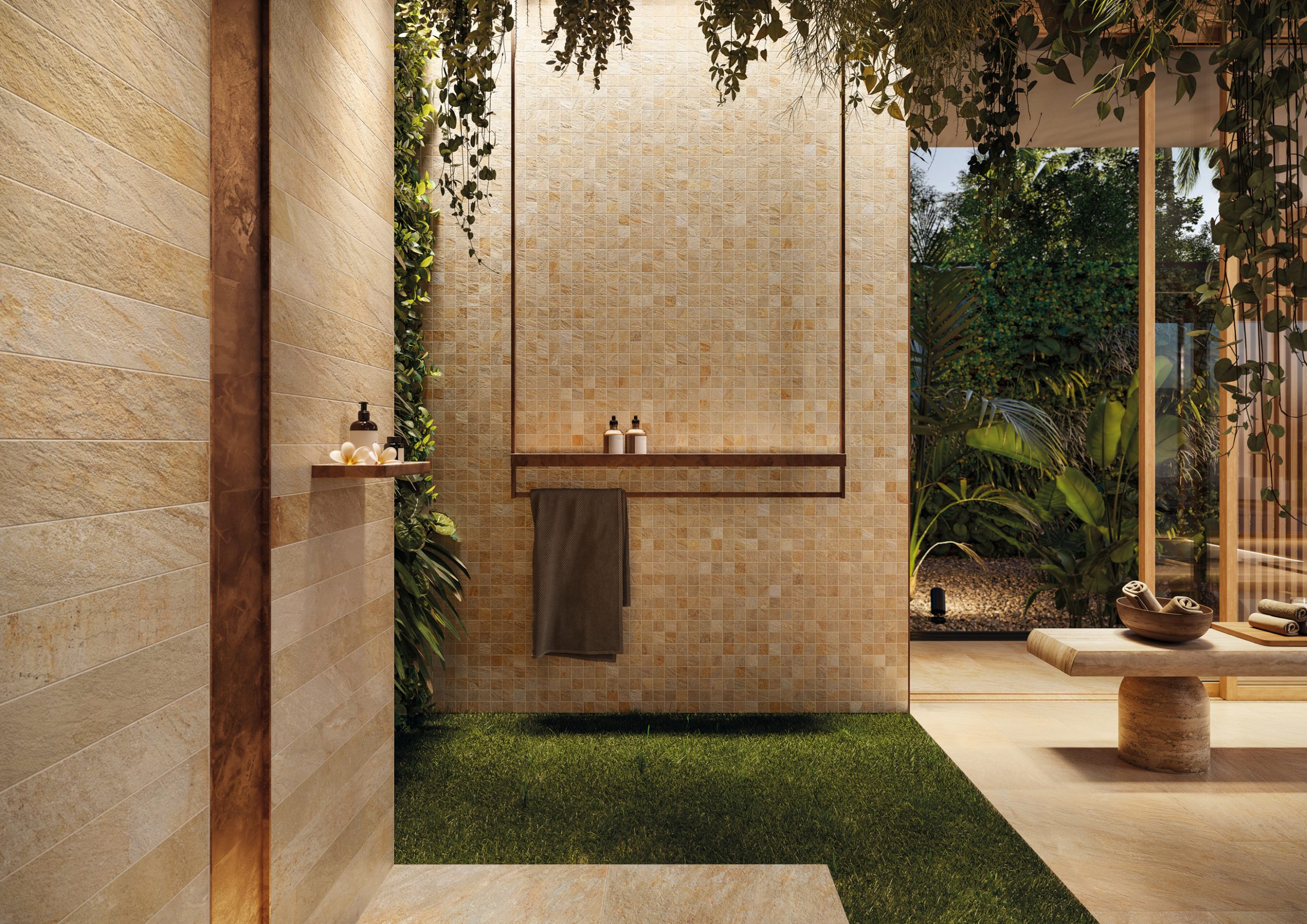
Trendy and practical, the Italian shower is an interesting solution for renovating a bathroom. It’s a great way to replace your existing shower cubicle or bathtub. However, if you want to carry out this work while keeping the existing tiling, the project becomes much more complex. In the rest of this article, you can discover the steps to follow to get the shower room of your dreams.
The Italian shower: what is it?
A walk-in shower is a shower tiled from wall to floor. It is also installed directly on the floor. In other words, it is often designed without a shower tray. If it has one, it’s usually insignificant in size. Inspired by the Roman baths, this walk-in shower is becoming increasingly popular because of the comfort and freedom it offers.
Why choose the Italian shower?
Prized for its modern touch and contemporary look, the Italian shower is the choice of many people looking to renovate a bathroom. It’s an aesthetically pleasing alternative that offers a luxurious, uncluttered design for your shower space. This choice blends in perfectly with contemporary bathrooms, giving them a healthy dose of elegance.
The Italian shower is also an extremely practical solution. Its structure makes it accessible to the elderly or people with reduced mobility. It’s also ideal for families with small children. What about maintenance? The Italian shower is easier to clean because it doesn’t have many tight, hard-to-reach corners. Cleaning becomes much simpler if you have used waterproof cladding or seamless tiling.
What’s more, the absence of traditional partitions in this shower makes it brighter and creates the impression of a greater sense of space. It’s also a customisable solution that’s suitable for any bathroom. You can choose the shape, size and materials that suit your tastes.
You should also be aware that installing a walk-in shower can considerably increase the value of your property. This is because future buyers really appreciate its functional, modern look. What’s more, a walk-in shower is an essential choice for a trendy room.
What you need to know before installing a walk-in shower over existing tiles
Are you thinking of renovating your bathroom with a walk-in shower and wondering whether it’s feasible? Do you want to carry out the work on existing tiles? You should know that it is possible. However, the work, which must be carried out by a professional, depends on the extent of the changes to be made, the condition of the existing tiling, and the solidity of the wall and floor coverings.
To install your Italian shower successfully, make sure there are no cracks or major damage to the tiling. Any damage to the tiling must be repaired.
Given its complexity, installing a walk-in shower over existing tiles requires a great deal of skill. It would therefore be a good idea to call in a qualified professional to make the project a success. This specialist can help you assess the feasibility of the work and offer practical, relevant advice.
The stages of the project
Have you been seduced by the virtues of the Italian shower and want to install one in your bathroom? There are a number of specific steps to follow to get the job done right.
Preparing the existing tiles
The first step is to prepare the surface for tiling the walk-in shower. The existing floor and wall covering must be thoroughly cleaned. The aim is to remove all dirt and existing joints. The surface to be used must be perfectly clean, smooth and ready to receive the waterproofing coats. During this phase, it is also essential to take the necessary steps to ensure the success of the project.
Waterproofing
To install a walk-in shower properly, it’s a good idea to apply a waterproofing membrane to the existing tiles. This will prevent any water seeping into the underlying structures. What’s more, by waterproofing, you can avoid problems with mould and protect your accessories and equipment. Whether it’s the floor or the walls, the entire surface of the Italian shower must be treated and waterproofed.
Installing the shower
Once you’ve finished laying the waterproofing membrane, you need to choose the right technique for installing your walk-in shower. There are two options.
- Redoing the entire floor: If you choose this technique, you’ll need to lower the floor. To do this, it’s a good idea to dig up the concrete to obtain the measurements you need for the new shower. Next, run the pipes under the floor to provide the water supply. A slope is essential at this stage to ensure that the water drains properly. If your shower doesn’t allow for a slope, it’s a good idea to install a suction pump. Once all these steps have been completed, your shower tray can be installed. You can opt for a ready-to-tile model and lay the bathroom tiles on top. It’s best to get a professional to do the installation.
- Raising the shower: Have you been unable to dig out the concrete and create a space to install the shower tray? Does your bathroom not have an underfloor drainage system? Opting for an extra-flat shower tray would be an interesting option. It should be no more than 3 cm high. If the water is drained above the floor in your shower, you need to raise the floor. This will allow you to connect the drainage pipes and install the trap and shower tray. If you’ve chosen to raise the whole room, you’ll need to provide a step to make it easier to get into your shower. You can also install the tray on a concrete slab. Whichever installation technique you choose, always make sure that your shower tray is properly sealed to the waterproofing membrane.
Installing the accessories
At this stage, the heaviest part of the work has been completed. It’s time to start the finishing phase of your shower. This involves selecting and installing the accessories: glass enclosures, taps, shower heads, etc. Make sure that the connections are watertight and properly fixed. Then check that all the installations have been carried out to the highest professional standards and that all the fittings are functional. As for the cladding, there are so many options that you’ll be spoilt for choice. You can opt for natural stone slabs or tiles. Above all, it’s important to choose materials that are water-resistant and non-slip. Finally, don’t forget to clean your Italian shower and remove any residue and dust from the construction work.
In conclusion
As the centrepiece of any home, the bathroom must be practical and functional. In recent years, the Italian shower has begun to take pride of place in homes because of its accessibility and its modern, designer look. As well as its aesthetic value, it offers greater independence for the elderly and people with reduced mobility. As a result, it is an excellent alternative to the bathtub. Installing it over existing tiles is possible and feasible, provided you follow certain rules and advice.




